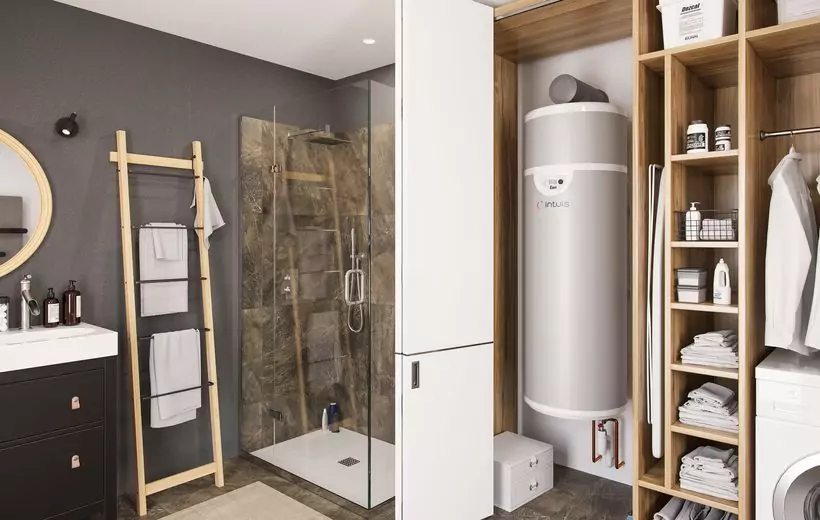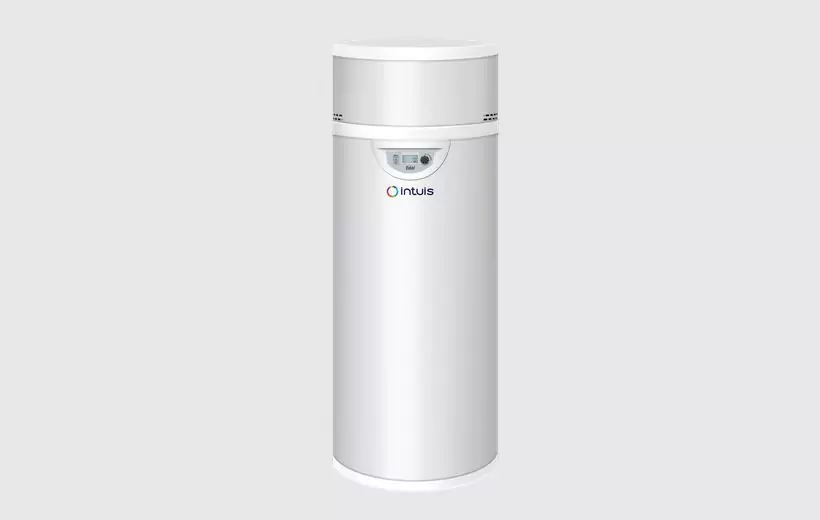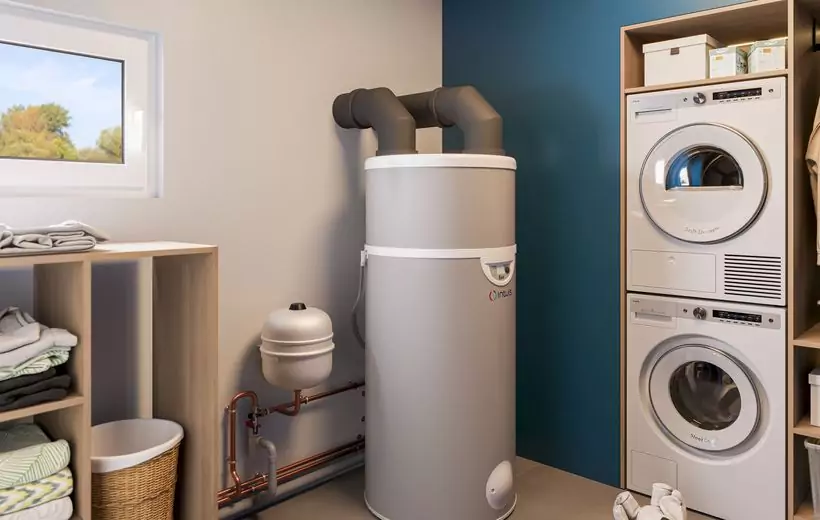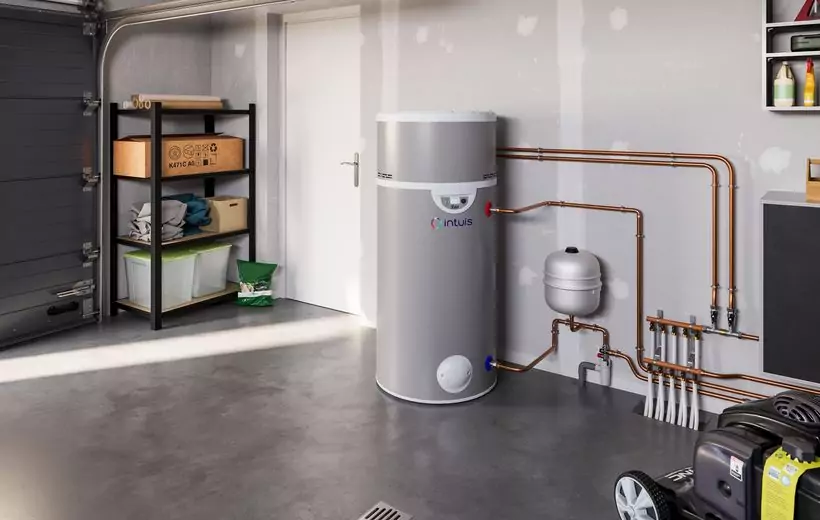

Table of contents

Table of contents
Replacing your electric water heater with a thermodynamic water heater is an increasingly popular alternative for reducing costs associated with hot water production, the second source of energy consumption in a home. Who installs it ? Is it possible to install it yourself ? Should I hire a professional ? What budget should be expected? Here's everything you need to know to successfully install your thermodynamic water heater.
How to install a thermodynamic water heater ?
Installing a thermodynamic water heater is a complex task that requires specific technical knowledge. That's why we recommend hiring a certified RGE professional.
Two professionals are competent in installing thermodynamic water heaters: a plumber or a heating engineer.
These experts will be able to assess your needs, choose the model suitable for your home, and ensure installation in accordance with the standards for installing a thermodynamic water heater.

Good to know:
The installation of your thermodynamic water heater is done in 3 main steps:
- Air connection
- Hydraulic connection
- Electrical connection
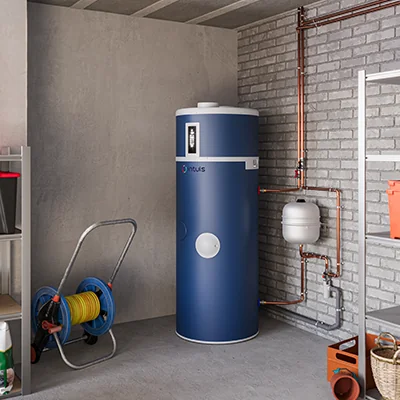
Where should a thermodynamic water heater be placed ?
The placement of a thermodynamic water heater is a crucial factor in optimizing its performance and ensuring its proper functioning over time, as well as ensuring comfort in the living space. That's why it's essential to adhere to certain rules regarding its placement.
Thermodynamic water heater with ambient air:
If your thermodynamic water heater draws its heat from the ambient air, meaning it takes in and releases air in the same room, the room in which it is installed must adhere to a minimum volume of 20 m³ (excluding the volume of bulky items): approximately 10 m² of floor space, for better air quality and treatment.
In addition to the minimum volume requirement, the thermodynamic water heater should be installed in an unheated room because it releases cool air.
It is recommended to install the thermodynamic water heater away from living spaces to reduce the noise from the fan and the cold air it emits. Ideally, install it in a laundry room or garage.
Thermodynamic water heater using outdoor air:
If your thermodynamic water heater draws its heat from outdoor air, it can be installed in any room: kitchen, laundry room, closet, etc., as long as there is adequate air ventilation.
From the outset of your project, it is recommended to consult a professional. Only a specialist can determine the most suitable location based on your home's configuration.

intuis has partnered with over 2500 qualified partner installers throughout France.
intuis offers a wide selection of thermodynamic water heaters, ensuring a solution tailored to every type of household. These water heaters stand out for their versatility, providing solutions suitable for various configurations. Whether you choose ambient air heating with models like Edel Air and Cylia, outdoor air heating with Edel Air, or water loop heating with Edel Eau, they are designed to fit seamlessly into any situation.
What are the main installation steps for a thermodynamic water heater ?
Even if you hire a professional, it's always useful to understand the different installation steps for your thermodynamic water heater.
Several steps are required to install a thermodynamic water heater: identifying the location, connections, electrical wiring, filling with water, and commissioning.
1. Location preparation:
Identifying the location of your thermodynamic water heater is a crucial step because it directly impacts the performance of your appliance and your comfort in the home.
The location of your thermodynamic water heater is determined by the type you have chosen:
- Monobloc thermodynamic water heater using ambient air
- Monobloc thermodynamic water heater using outdoor air
- Thermodynamic water heater integrated with underfloor heating
It's important to note that the weight of the water tank has an impact, so the location must be suitable. Additionally, consider the distances required for handling and maintenance. Also, condensate management needs to be planned.
2. Installation of the thermodynamic water heater :
Your equipment is installed according to the manufacturer's recommendations and relevant standards.
This includes connecting to water pipes, air ducts, and the electrical system.
3. Verification and commissioning:
During this final step, your heating engineer performs tests to check the proper functioning of your thermodynamic water heater. They ensure that all connections are watertight and that your equipment is ready for use.
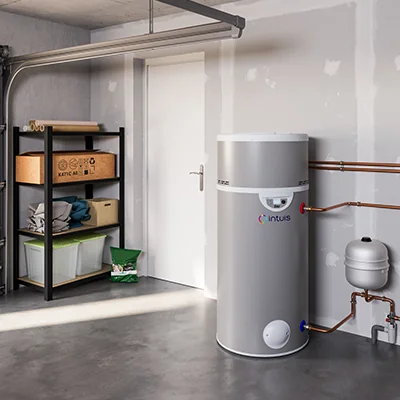
What budget should be planned for the installation of a thermodynamic water heater?
To answer this question, it is first important to be aware that besides the price of installing a thermodynamic water heater, you will need to allocate a budget for the purchase of your equipment, and potentially for electrical and plumbing work if necessary.
It is generally considered that the price of a thermodynamic water heater is linked to its capacity. To determine the tank size you need, it's quite simple: it depends on the number of people living in your home. For example, a 200-liter tank is recommended for a family of 3 to 4 people, while a 300-liter tank is more suitable for a household of 4 to 6 people.
For personalized advice and a detailed quote, we recommend turning to intuis network of qualified professionals. Their expertise will help you evaluate installation costs, choose the ideal capacity for your thermodynamic water heater, and plan any necessary additional work.

intuis has partnered with over 2500 qualified partner installers throughout France.
In conclusion, opting for the installation of a thermodynamic water heater represents an increasingly popular solution for reducing costs associated with hot water production. The complexity of this operation underscores the importance of engaging certified RGE experts, such as plumbers or heating engineers, to ensure installation compliant with standards and perfectly tailored to your specific needs.

